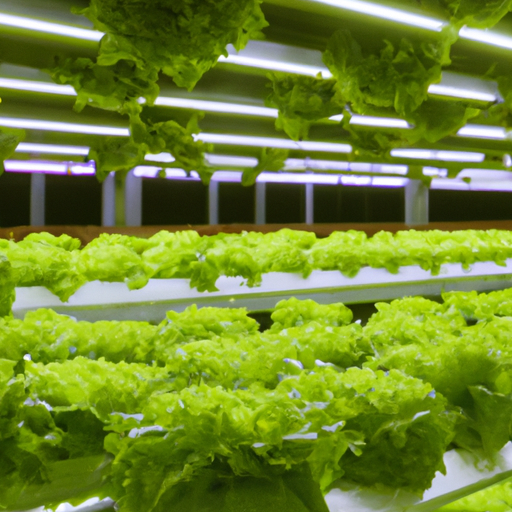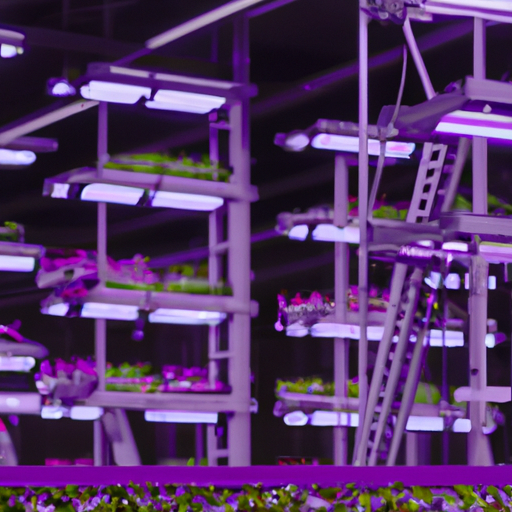Revolutionary vertical farming technologies are transforming food production in cities worldwide. New AI-driven systems are increasing yields while reducing water and energy usage by up to 95%. These sustainable farming solutions could be key to feeding growing urban populations while minimizing environmental impact.

The landscape of urban agriculture is undergoing a dramatic transformation as vertical farming technologies reach new heights of innovation and efficiency. This revolutionary approach to food production is proving to be a game-changer in addressing both food security and environmental sustainability challenges in metropolitan areas around the globe.
Vertical farming, at its core, involves growing crops in stacked layers within controlled indoor environments. But today's systems go far beyond simple hydroponic setups, incorporating cutting-edge technologies that are reshaping our understanding of urban agriculture's potential.
One of the most significant breakthroughs has been the integration of artificial intelligence and machine learning systems. These sophisticated platforms continuously monitor and adjust growing conditions, analyzing thousands of data points per second to optimize temperature, humidity, nutrient delivery, and light exposure for each crop variety. The result is unprecedented precision in plant cultivation, leading to yield increases of up to 400% compared to traditional farming methods.
The lighting systems used in modern vertical farms represent another leap forward in sustainable technology. Advanced LED systems now mimic natural sunlight with remarkable accuracy, providing plants with customized light spectrums that promote optimal growth while consuming up to 50% less energy than previous generations of growing lights. Some facilities have begun implementing dynamic lighting systems that adjust throughout the day to match plants' natural circadian rhythms.
Water conservation is perhaps one of the most impressive achievements of these new systems. Closed-loop hydroponic and aeroponic systems recycle up to 98% of water used, making vertical farms up to 95% more water-efficient than conventional agriculture. This efficiency is particularly crucial in urban areas where water resources are often strained.
The integration of robotics has also revolutionized vertical farming operations. Automated systems handle everything from seeding to harvesting, reducing labor costs and increasing consistency in crop management. These robots use computer vision and sophisticated sensors to monitor plant health, detect diseases early, and ensure optimal harvesting times.
Beyond the technical innovations, vertical farms are becoming increasingly energy-efficient through the implementation of renewable energy systems and smart grid technologies. Many facilities now operate using a combination of solar power, wind energy, and biogas generated from organic waste, creating a nearly closed-loop system of sustainable operation.
The economic viability of vertical farming has improved dramatically with these technological advances. While initial setup costs remain significant, operational efficiencies and higher yields are making these systems increasingly attractive to investors and entrepreneurs. Some facilities are now achieving break-even points in as little as three to four years.
Vertical farms are also adapting to grow a wider variety of crops than ever before. While leafy greens and herbs were once the mainstay of indoor farming, new technologies are enabling the successful cultivation of root vegetables, fruits, and even certain grains. This diversification is crucial for the long-term viability of urban farming as a significant food source.
The impact on urban food security cannot be overstated. These farms can operate year-round, regardless of weather conditions, and their proximity to urban centers drastically reduces transportation costs and associated carbon emissions. Some cities are now integrating vertical farms into urban planning initiatives, recognizing their potential to enhance food security and sustainability.
Looking ahead, the future of vertical farming appears even more promising. Research is ongoing into new growing mediums, more efficient lighting systems, and enhanced automation capabilities. Some projects are exploring the integration of vertical farms with other urban infrastructure, such as office buildings and residential complexes.
The environmental benefits extend beyond water and energy efficiency. By reducing the need for traditional agricultural land, vertical farming helps preserve natural habitats and biodiversity. The controlled environment also eliminates the need for pesticides and herbicides, producing cleaner, healthier food while reducing chemical runoff into ecosystems.
As urban populations continue to grow and climate change threatens traditional agriculture, the innovations in vertical farming technology offer a promising path forward. These systems represent not just a new way of growing food, but a fundamental shift in how we think about agriculture, sustainability, and urban food security in the 21st century.



